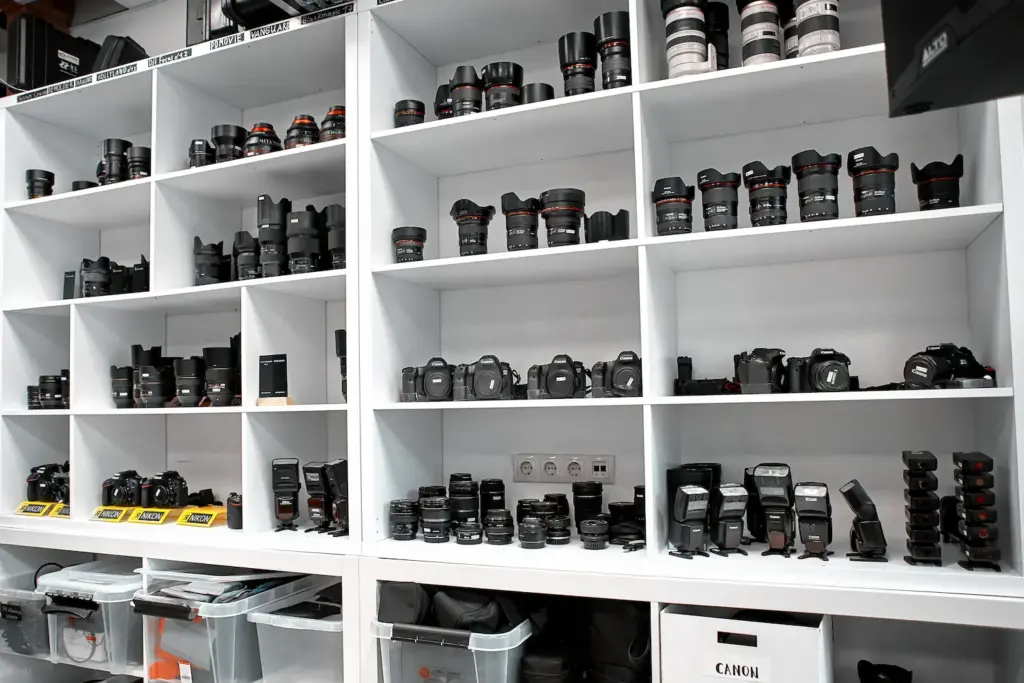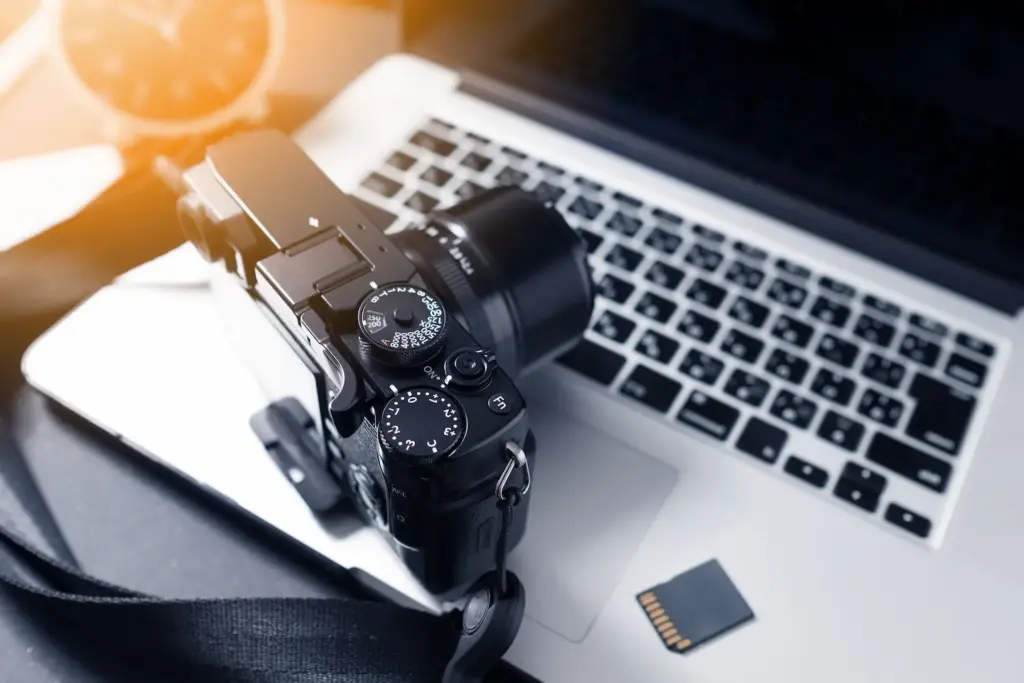In the world of photography and filmmaking, having the right equipment is as crucial as possessing the skill and vision to create compelling content. While owning high-end gear might be ideal, it's not always feasible, especially for freelancers and small production companies. This is where camera equipment rental becomes a game-changer. However, navigating the rental […]
In the world of photography and filmmaking, having the right equipment is as crucial as possessing the skill and vision to create compelling content. While owning high-end gear might be ideal, it's not always feasible, especially for freelancers and small production companies. This is where camera equipment rental becomes a game-changer. However, navigating the rental process can be fraught with pitfalls, and a single oversight can impact the quality of your work or even the success of your project.
Choosing the right rental equipment isn't just about selecting the best camera and accessories. It involves a deeper understanding of what makes a rental choice effective and efficient for your specific needs. Whether you're shooting a documentary, a commercial, or a personal project, the equipment you use should seamlessly integrate with your creative process and enhance your ability to tell stories visually.
Unfortunately, many photographers and filmmakers, especially those new to the industry or working on a tight budget, fall into common traps when renting equipment. These mistakes can range from overlooking the physical condition of the gear to misunderstanding the nuances of rental agreements. Each misstep carries its own set of consequences, which can range from minor inconveniences to major setbacks in your production schedule.
In this article, we'll dive into the top five camera equipment rental mistakes and provide practical tips to help you avoid them. By understanding and anticipating these challenges, you can ensure that your rental experience is smooth, cost-effective, and most importantly, contributes positively to the quality of your work. Let's embark on this journey of informed decision-making and strategic planning to elevate your next project.

Mistake 1: Overlooking Equipment Condition
One of the most common yet overlooked aspects of renting camera equipment is the condition of the gear itself. In the pursuit of getting the best deal or the most advanced technology, many photographers and filmmakers neglect to thoroughly inspect the equipment before renting. This oversight can lead to significant issues during a shoot, such as malfunctioning gear, compromised image quality, or even total equipment failure.
To avoid these pitfalls, it is essential to conduct a meticulous inspection of the equipment prior to finalizing the rental. Start by physically examining the camera body, lenses, and accessories for any signs of wear and tear. Look for scratches on the lens, dents or damage to the body, and ensure all moving parts operate smoothly. Check that all buttons and dials function correctly and the battery compartments are clean and intact.
Testing the equipment is just as important as the visual inspection. Take a few test shots or record a short video to ensure everything works as expected. Check autofocus, image stabilization features, and any other specific functions you plan to use. If possible, do this testing in a setting that mimics your planned shooting conditions.
Remember, your project's success heavily relies on the reliability of your equipment. Addressing these checks beforehand not only saves time and prevents frustration but also ensures that the quality of your work remains uncompromised. Renting camera equipment is a trust-based transaction; ensuring that trust isn't misplaced is crucial for your peace of mind and the success of your project.
Mistake 2: Ignoring Compatibility Issues
A critical mistake often made in camera equipment rental is ignoring the compatibility of rented gear with existing equipment. This oversight can lead to significant technical challenges on set, impacting everything from lighting setups to audio recording. Ensuring compatibility is essential for a seamless integration of new and existing equipment, allowing for efficient and effective shooting.
The key to avoiding compatibility issues lies in thorough pre-planning. Before renting, assess the specifications and requirements of your existing equipment. Pay close attention to details such as lens mounts, memory card types, and input/output connections. For instance, renting a camera that doesn't match your lens mount type renders your existing lenses useless. Similarly, different brands or models of cameras and accessories might require specific types of memory cards or cables that you might not possess.
To ensure compatibility, consult with the rental service providers. They are usually knowledgeable about their equipment and can advise on what works best with your existing gear. Additionally, bring a piece of your equipment, such as a lens or a memory card, to test with the rental gear if possible.
Ignoring compatibility can not only disrupt your shooting schedule but also inflate your budget, as you might need to rent additional adapters or accessories. Therefore, a little foresight and a few compatibility checks can save a lot of time and hassle, ensuring your project progresses smoothly without any unwelcome surprises.

Mistake 3: Not Understanding Rental Terms
A crucial aspect often neglected by photographers and filmmakers in the rush to acquire gear is thoroughly understanding the rental terms and conditions. This oversight can lead to unexpected costs, legal issues, or even the inability to use the equipment as intended. Knowing exactly what you're agreeing to is fundamental to a successful rental experience.
Rental agreements can vary significantly from one provider to another. They often include details on the rental period, insurance requirements, late return penalties, and liability for damage or loss. Neglecting to read and comprehend these terms can result in unforeseen expenses. For instance, some rental services might charge exorbitant late fees or require you to cover repair costs for any damages, even minor ones.
Before signing any agreement, take the time to read it thoroughly. Pay attention to the fine print regarding the return policy, cancellation fees, and any deposit required. If the agreement includes insurance, understand what is covered and what isn’t. It's also wise to ask about any scenarios not explicitly covered in the contract, such as equipment failure during the rental period.
In case of any uncertainties or unfamiliar terms, don’t hesitate to ask for clarification. Remember, asking questions upfront can prevent costly misunderstandings later on. Being fully aware of the rental terms not only protects you legally and financially but also ensures a more confident and stress-free use of the rented equipment.

Mistake 4: Underestimating the Need for Backup Equipment
A frequently underestimated aspect of equipment rental is the necessity of securing backup gear. Many photographers and filmmakers, often constrained by budget or overconfidence in their primary equipment, overlook the importance of having a contingency plan. This oversight can lead to disastrous situations where a single equipment failure can halt an entire production, resulting in lost time, increased costs, and missed opportunities.
The reality of working with technology, especially in the demanding environments of film and photography, is that equipment can and does fail. Whether it’s due to battery issues, mechanical malfunctions, or accidental damage, the absence of backup gear can turn a minor hiccup into a major crisis. For instance, having an additional camera body or lens can save the day if your primary camera malfunctions. Similarly, spare batteries, memory cards, and even lighting equipment can be lifesavers in long shooting sessions or in remote locations.
To avoid this pitfall, always include backup equipment in your rental plan. Assess the critical components of your gear and identify suitable backups. While this may increase your rental costs upfront, the investment is trivial compared to the potential losses of an interrupted shoot. Remember, in the world of photography and filmmaking, it's not just about capturing the perfect shot; it's also about ensuring you're always in a position to do so. Backup equipment is not just a safety net; it's an essential part of professional planning and execution.
Mistake 5: Failing to Plan for Logistics
Logistical planning is an often-overlooked yet critical aspect of camera equipment rental. Many photographers and filmmakers focus so intently on the creative aspects of their projects that they neglect the practicalities of transporting and handling the rented gear. This oversight can lead to a range of problems, from minor inconveniences to significant delays and added costs.
Transportation is a key factor in logistics. Consider the size and quantity of the equipment: Do you have adequate and secure transportation to and from the shoot location? Larger items like cranes, dollies, or extensive lighting setups require more than just trunk space; they might need a van or a truck. Also, consider the journey to the shooting location – are there stairs, narrow passages, or rugged terrain? Each of these scenarios requires different transportation and handling strategies.
Handling and storage are equally important. Ensure you have a safe place to store the equipment, both on and off set. Exposure to elements like rain, dust, or extreme temperatures can damage sensitive gear. Also, consider the time and manpower needed for setting up and dismantling the equipment.
To mitigate these issues, create a detailed logistics plan. This should include transportation, storage, setup, and backup plans for unforeseen circumstances. Collaborate with your team and the rental company for insights and solutions. By giving logistics the attention it deserves, you can ensure that your focus remains on creativity rather than dealing with avoidable logistical challenges.
All right, we threw a lot at you there. Here’s a quick recap. First, never overlook the condition of the gear; thorough inspection and testing are crucial. Second, ensure all rented equipment is compatible with your existing gear to avoid technical issues. Third, thoroughly understand the rental terms to prevent unexpected costs and legal problems. Fourth, always have backup equipment ready to counter unforeseen equipment failures. Lastly, plan your logistics carefully, considering transportation, storage, and handling of the equipment. Avoiding these common pitfalls will lead to a smoother, more efficient shooting experience, ensuring your project's success without unnecessary stress or expense.
Have a great shoot!

